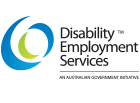
For the 1 in 5 Australians living with disability, injury or health barriers, it is significantly harder to secure sustainable employment. More often than not, their main barrier to employment is not their personal barriers, instead it is the barriers created by others. Their preconceived assumptions about another person’s ability, inaccessible technology, or their limited knowledge of how workplaces can be accessible by implementing workplace adjustments. A survey conducted by Job Access revealed that 72% of respondents were unsure or did not know how to arrange workplace adjustments for a person living with disability[i].
Earlier this month (16th May), marked the thirteenth Global Accessibility Awareness Day (GAAD). The aim of GAAD is to start the conversation – getting people thinking and learning about digital accessibility[ii]. Digital accessibility is only one element yet an important piece of creating an accessible workplace. Digital accessibility gives people who live with disability or an impairment, the opportunity to access technology, programs or systems that may be required in a workplace. atWork Australia Brand Ambassador, Shaun Pianta, said, “I have been living with a vision impairment for the past 15 years and with the use of technology, such as screen readers I can access most programs and websites. However, there are some limitations that can be frustrating at times. Simple things like colour contrasts, programs not being compatible with screen readers, or trying to read a PDF can be difficult using voice over technology.”
Looking at accessibility more broadly, for a person who lives with a disability, injury, or health condition, their barriers, and the support they need is unique to their individual needs. Therefore, to create an accessible workplace there needs to be unique solutions to meet an individual’s needs and abilities. When discussing workplace adjustments, there is a common misconception that workplace adjustments require physical changes to a workplace. In reality, the most effective workplace adjustments are changes in work processes or procedures, flexibility in work hours and tasks. A recent Job Access survey indicated that 55% of respondents feel an accessible workplace has helped them maintain their employment. While 44% said it has led to an increase in productivity[iii]. atWork Australia team member, Cherie, said, “Apps or technology such as Siri or similar digital assistive technology are really helpful for me in my role. As a Neurodivergent person, my brain moves really fast, and I can look at a word and go, is that right, it looks right, does it look right, and then I get stuck questioning myself if it is the right word. Being able to go ‘Hey Siri, is this word right?’ and have that confirmation it helps me to move on with my work and not waste time being hyperfixated on one word. I use Siri as a backup and sounding board which helps me in various situations. I don’t think people realise that tools like Siri can be very helpful for people living with disability.”
In most instances, creating an accessible workplace requires simple, easy to implement adjustments. However, some situations require more sophisticated technology. atWork Australia client, Kishore, lives with a deteriorating neurological condition impacting his nerves and ability to walk. Kishore was diagnosed with his condition in 2012. By 2017 he required a walking stick and by 2022 his condition has deteriorated to a point where he requires a wheelchair to leave the house. Up until 2017, Kishore enjoyed steady employment in the Road and Maritime Services industry. However, due to a restructure, Kishore found himself unemployed. Kishore said, “Due to my deteriorating condition and increased accessibility requirements, I was finding it difficult to secure a new position.”
Kishore connected with atWork Australia to get support on his employment journey. atWork Australia are a leading Employment Service provider, supporting people living with disability, injury, illness, or disadvantage.
Through atWork Australia’s relationship with Woolworths, Kishore was invited to trial a state of the art accessible checkout that allows people with physical limitations to operate a checkout. As a result of Kishore’s enthusiasm and willingness to support the Woolworths team, he was offered a job almost immediately to join the team and became one of the first employees to utilise the new technology. Kishore said, “This assistive technology has created new opportunities for me, and I look forward to progressing in my new workplace.”
As new innovative technology continues to develop, it helps break down barriers and create more accessible workplaces and opportunities which allows people who live with disability to participate in the workplace more effectively. atWork Australia works with clients in a multitude of ways. This is by way of tailored support that can help an individual overcome their barriers as well as through practical and financial support to receive the right training or education that will build skills to lead to sustainable employment.
[i] https://www.jobaccess.gov.au/sites/default/files/documents/12_2023/understanding-workplace-attitudes-toward-people-disability.pdf
[ii] https://accessibility.day/
[iii] https://www.jobaccess.gov.au/sites/default/files/documents/12_2023/understanding-workplace-attitudes-toward-people-disability.pdf


